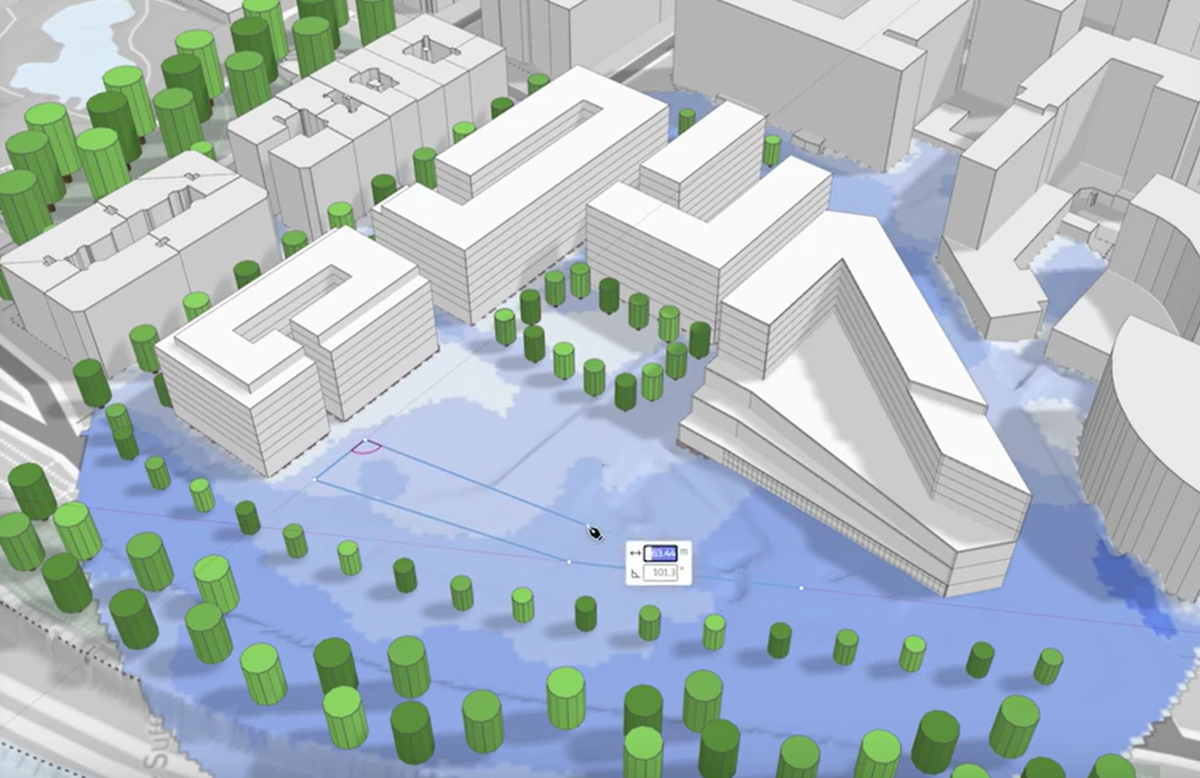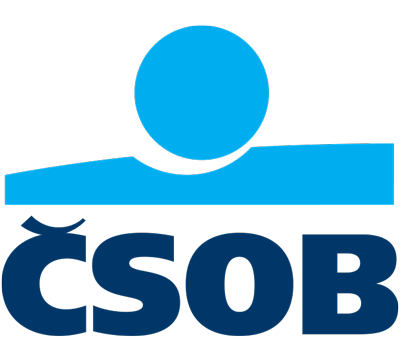However, the flaws not only stem from the gap between understandings of architects on the one hand and AI developers and computer scientists on the other. The core is that the truly creative architectural tasks are objectively unsolvable by state-of-the-art AI; two principal reasons will be discussed later: unavailability of the computing performance needed and, more substantially, the nature of true creativity that state-of-the-art AI algorithms and networks cannot cope with.
Critical review´s focal perspectives
To be followed to understand the position and prospects of AI in architecture and the development of the built environment, three focal perspectives appear throughout researching the state-of-the-art. Across the sections, the critical review must adopt all three viewpoints.
An architectural design process starts way before the parametrization can involve that lays at the heart of all the so-called computer-aided design (CAD) tools and all the existing AI strategies to develop layouts, whether in a building or a locality scale. This phase is where authentic creativity – poiésis as Heidegger revives the term coined by antic philosophers – applies as opposed to mimetic approaches that represent techné – mathematics as well as parametric design whether of spaces division within a building, construction, or pattern-based elaborating of architectural form; and, significantly, this is the design phase, which IT AI developers, computer scientists, also the general public, and surprisingly, many members of the architectural profession are not aware of. The consequences are social – undervaluation of the profession´s members – branch´s concerns – sidelining and downgrading of the architectural craft– and the misconception embedded in efforts to perform mimetic, parametric ways the authentic creativity that is inherently poiétic. Leaving both the social and branch-affecting consequences for else elaboration, the last of the consequences is the first of this paper´s critical approach´s starting points.
Second, in the hectic conditions of rapid development and radical innovations in today’s AI scene, architecture and built environment development appear not only sidelined but outdated, or perhaps misled in terms of technologies applied and considered, too. Leaving aside image-processing tools deployed in architectural studios to spare time and boost efficiency in topic researching, ideas thematization, and concept- and mood-options articulation, the efforts (though disputable in terms of actual contribution) to deliver generative tools to design architecture at least in a form of layouts are stuck in statistical approaches of input-output pairings implemented by supervised learning algorithms and generative adversarial networks. At the same time, impressive results are being achieved in autonomous driving, robotics, gaming, and other areas where expert human behavior can serve as a guide. There, instead of supervised learning, which no longer enjoys state-of-the-art status, reinforcement learning, self-learning, meta-learning, and other new approaches supporting imitation-based- and transfer learning, tree of thoughts, auto-associative, and other revolutionary algorithms apply that active and proactive agents perform. These strategies appear to be very adherent to architectural design processes; however, the possibility of adopting this class of applications has so far escaped the attention. Unlike an autonomous vehicle, a “design robot” would not learn from real-world scenes – it would learn from processes – sequels of steps taking place (in the parametric stages of architectural design or even before as Wearrecho allows) in a CAD or a VR/XR extended software environment (as annotated in section (2) of this paper).
Overlapping partly (when it comes to architectural design applications) with the second, third starting- and focal point of the critical review is the concurrence (already coined as the trinity) of the fundamental three- and more-dimensional spatiality and diachrony of both architecture and recently developed virtual reality- and spatial computing technologies together with the new theory of human thinking and intelligence that may be waiting for implementation in machine learning.
AI in AEC: Results achieved
With respect to the undoubted qualifications and ingenuity of the authors, the results of the Phillip Isola Research Group, Kyle Steinfeld, the “typical style” road- and circulation patterns and networks delivered by Neural Turtle Graphics, and others can be considered interesting outputs of research efforts in computer science or perhaps graphics, but only scarce contributions can be identified in terms of architectural workflow and solutions. Similarly, the parametric semiology outcomes of Daniel Bolojan or Tom Mayne´s operational strategies render too speculative to provide some practical analytical starting point. DeepHimmelb(l)au alike early results of ZHA in AI show outputs of hundreds (rather thousands) hours of dedicated work of talented multi-expertise teams: outputs (in terms of conceptual approach and contribution – leaving aside the “video show” that, factually, has little to do with architecture) that the principal of the studio would sketch by hand within half an hour or so – and at the same time, opposed to the AI, would consider the spatial and operational concept represented by the sketch.
So far, the values of deliverables provided by the AI of (former) Spacemaker, Cove.tool, or Creo are appear undeniable, though not without caveats. Starting from a better organization of the working environment of a design engineer, Creo contributes to the productivity and efficiency of his work by model-based defining, simulations, additive and subtractive modeling, and manufacturing; Creo fosters the creative potential of a designer through generative design [265]. Similarly, Cove.tool, a cloud-based network of tools that provides interconnectivity within the teams working in the design and pre-construction cycle on issues of daylight, carbon footprint, climate, geometry, HVAC, or cost, delivers performance data of the building solutions in real-time, employing AI’s power [266]. Nevertheless, being acquainted with the working paradigm of Creo or Cove.tool challenges whether it is true AI – in terms of network, algorithm, and the principle of training – what makes the software able to deliver: an ordinary rule-based algorithm would provide the same information.
Also famous as the two hundred and forty million acquisition of the tycoon AEC-software-producer Autodesk [97], Spacemaker was promising not only to give the architects and developers the automation superpower to test design concepts in minutes and explore the best urban design options. It enables users to quickly generate, optimize, and iterate on design alternatives, all while considering design criteria and data like terrain, maps, wind, lighting, traffic, and zoning, with the help of AI. Utilizing the full potential of the site from the start, it allows designers to focus on the creative part of their professional work [267].
A practical deployment of Spacemaker raised doubts, though: the workflow was the issue. The user entered the address of the location and the boundaries of the territory; with the help of an open database like OSM, the terrain was generated, and it was also possible to generate existing buildings and structures. Roads could be added; buildings could be placed either manually by inserting individual floorplans as objects that could not be subject to later adjustments or the buildings could be generated automatically by the software based on input parameters entered: width, height, object shape, minimum/maximum number of floors, and/or by apartments´ sizes mix. Then the tool generated options for site plans and the user could assess the options based on gross- and/or netto-floor area totals and modify the chosen option by some of the spatial transformations: shift, rotation, … Spacemaker evaluated the finally proposed solution in terms of noise, wind, sunlight, daylight, and microclimate. Exports of the parameters to Excell and of the model to Autodesk Revit or to .ifc format were available. All in all, the evaluations of the designed locality´s microclimate parameters and the imports of entry parameters were valuable and efficient functionalities. What happened in between – how the design came to existence, Pavel Shaban of MS architekti [268], a Prague/Czech Republic-based architectural studio claims, could suit a shortsighted real estate trafficker, but it was far from a creative and responsible architect´s workflow: in short, a comprehensively sustainable built environment develops along a grid-and-grain public space structure and not vice versa. A network and profiles of vital, livable, and responsible public space do not fall from the skies nor emerge by chance. The public space – streets, squares, parks, places, public amenities areas, … – has to be designed carefully, responsibly, considerably, and poetically first, to adopt particular buildings only after [269]. However, this is a process that Spacemaker not only did not support but also did not allow.
The career of the startup Spacemaker was brilliant – the life of the tool was short. Shortly after the acquisition by Autodesk, Spacemaker “dissolved” into Autodesk Forma, a cloud-based early-stage planning and design software [270], a more advanced successor to the former Autodesk Formit.
The presentation of Carlos Baňon´s achievements in mastering Midjourney, Satble Diffusion, and ControlNet are impressive [271]. However, delving into the proposals delivered fails to reveal a true architecture – if not added by a human architect in the loop. In general: the more impressive the performance of a generative application presented by the developer, the more essential for the user is to understand that it is just a tool at the designer´s hand, not a feature that could make the human author redundant.
Similarly, up-to-date AI applications to generate floorplans and apartment layouts emerge to be ambivalent when it comes to the effectivity and practical usability of their outputs: tens of options are delivered to ease an architect´s task when taking over a load of mechanical generating various options and to be considered by him finally [272] – appearing prematurely published if not useless at the end. On the other hand, when designing the furniture layouts of a prepared floorplan, results that are more satisfactory emerge: as a rule, a corrective AI tool instructed through careful and detailed prompts by a human architect renders more capable than a conceptual one – better to say, it provides usable output, unlike a conceptual AI tool.
Mimicking the workflow
Opposed to fine arts, literature, poetry, dance, or drama, whose production is only consumed, architecture is always also used. The “almost consumer goods” characteristic may turn attention to the processes of emerging the architecture – rather than its final form. Subsequently, deploying algorithms (even rule-based algorithms that do not bear the characteristics of AI), pre-defining parameters, and patterns in the design process come into consideration.
One of the first authors and researchers active in this field was Makoto Sei Watanabe already in the 1990s [273]; however, having focused on machine-aided design rather than on analyses and the use of patterns, he remained unsatisfied with what AI was able to deliver in terms of design compared to the intuition of the (human) architect. Others, like Immanuel Goh or Andrea Banzi searched for explicit rules-scripting-based design generators working with inferred rules drawn from the dataset of samples. Not a patterns´ assessment and appropriation, but recognizing the internal logic of the pattern, and then extrapolating a broader design based on that logic that could potentially continue forever … [274] in reality failing to contribute to the design practice eventually.
Recently, XKool, an AI startup in Shenzhen, China, developed a web-based platform for using AI across a range of tasks from architecture to urban design [275]. Though not-so-easy to be used practically or to be tested by non-Chinese residents [276], the approach of the studio and results achieved so far by the application awaken hope to overcome the lack of attention to the immense richness of patterns provided by the existing building stock and design representations. XKool appears an efficient AI application for architectural design, streamlining the design process and making it more efficient in terms of both analyzing a vast range of possibilities and generating designs (or pre-designs, more accurately said) based on samples – to evaluate and return the most suitable outcomes, and, moreover, to develop them further according to the given constraints [277]. XKool´s way of working is revolutionary – and no worry that the outcomes do not look very novel as a rule: the core is it copes with the “consumer goods” characteristics of the design category. The mission to challenge “the architect genius” [278] that, so far, has been the motivation behind the efforts to develop an AI-based design tool (almost) as a rule, shows debunked by XKool approach and results achieved. In general, a new approach emerges consisting of AI “designing” by – first – delivering pre-designs, it is solutions close to set parameters – as close as the available patterns allow, and then – second – “assisting” the human designer in adapting the pre-designs, tailoring the final, specific solution; the nature of the “assisting” is quantitative, parametric assessment, feedback concerning the goals and result assessment including finding the system of criteria, specification of the particular criteria, and evaluation criteria sets that AI can develop and complete continuously. The patterns-oriented approach, when confirmed and developed, and developed the patterns stock – libraries of parametric examples, representations of solutions existing so far, promises to bring a paradigm change within AI in architecture and AECO (architecture, engineering, construction, and operation) ; more to be elaborated in section (4) of the paper.
Ultimately, not only solution patterns – layouts, computer 3D models of architecture – can and should be mimicked. Examples of robots mimicking humans in diverse activities – Figure-1 preparing coffee as an example together with diverse self-learn and imitation-based learning strategies, as introduced in section (2) of this paper, suggest focusing on the design process itself. Opposed to the Figure-1 case, learning will not take place by observing a person at work (with a video camera), indeed: it will be the steps of design development proceeding in the CAD or an into VR/XR extended environment – the sequences of the drafter´s or designer´s actions in a parametric design tool, Autocad, Revit, Allplan, or Bentley CAD software typically, or within the Wearrecho platform. Such a strategy may sound self-evident: however, it has not yet been implemented for architectural design or development planning of the built environment, even experimentally, perhaps with a partial exception of the experiments mentioned at the beginning of this sub-chapter, XKool primarily. Finally, the proposal of such an approach in this article also makes comprehensible the extensive introduction of learning strategies and network types in section (2). If AI in architecture has been dominated by supervised learning and GANs so far, the future – and a breakthrough – may be reinforcement learning strategies and autoregressive, brain-inspired deep imitation neural networks, attention mechanisms, dual neural circuit policy architectures, and transformers (so far dedicated to robotics primarily).
When AI Works
Put in the previous sub-section and more in deep elaborated later, the using aspect of architecture is not a denial of the poetic essence of architecture. Inevitably, two realms of architectural design and a plan to build a building can be identified and distinguished; the first one comprises properties and performances that concern (even though not exclusively) the use, and the other delivers poiésis, poetry, mood, excitement, or experience. The interface between the two realms does not match the interface between architecture, as characterized by concerns to use by humans, to human activities and needs, and the communication of experiences and ideas by its form, and construction that materializes the architecture. It circumscribes the material opposed to the mental, emotional, artistic – whatever you like to call the architectural poetics. E.g., set by architecture, the spatial structure of a building gives the ergonomy and efficiency of movement within the building: it is the architectural design, not the construction solution that determines these material, quantitative parameters of the building.
Anything material can be parameterized, anything parametric can be quantified, and anything quantitative can be compared and evaluated objectively – or at least (very) close to objectively. And this is the case for a large part of an architectural design, a proposal of a building or an enclave of the built environment. Concerning the quantitative, objective and comparable assessment of the complex of diverse phsical performances of buildings´ and built environment´s designs – such as operational and energy efficiency, acoustics, ergonomics, daylighting, and other physical benefits that architecture provides to man, community, and society – the state-of-the-art performs mature tools related to particular parameters. This is what software applications like Cove.tool, Creo, Giraffe, the applications used by MVRDV as outlined further in this chapter, and many other tools already introduced and proven in architectural and planning practice deliver, though not always distinguishing between physical architectural respects and respects of the construction.
The construction is another story: parametric, “mathematic” by nature, the mimetic, imitative creativity of designing constructions welcomes algorithms and parametric patterns. Such is the starting point for the excellence of generative AI software systems, their leading computational approaches being optimization and optioneering, analysis and simulation. The examples of most advanced aplications are ETABS, SAP 2000, STAAD PRO, RAPT structural engineering software, SCIA Engineer [279], or Tribby3D [280,281]. Generative AI may be an approach deployed in multiple structural engineering software tools “from time immemorial”, however, a black box must not have a final say when it comes to responsibility, such as in the case of structural design. So far, “good old” computational practices and rule-based models are proving indispensable in this regard.
Mimetic, too, is urban design, its supportive disciplines being parametric by nature. Examples of application of AI in the field have been overviewed in (2) zooming in on tools such as (former) Spacemaker, Creo, or Cove.tool – in terms of both succesfull and contributing use of AI and of misconceptions.
At this point (in previous subsection), Spacemaker “got spanked” for many other AEC software tools that are parametric and shorthand imitative by nature and yet they are pushed to architects as creative tools, which is not so rare in today´s practice. Fortunately, better cases have been witnessed – also in the deployment of Generative AI. MVRDV, Dutch by origin, today a global architectural studio, shows up as a successful pathfinder in terms of AI use and development. In response to the need to push the limits of technological possibilities for the sake of innovative architecture, MVRDV NEXT – shorthand for New Experimental Technologies – was founded in the 2010s as an internal startup. Headed by one of the studio´s partners Sanne van den Burgh, a group of in-house specialists develops and implements computational workflows and new technologies. Through a mixture of project-based work and standalone computational research, they rationalize designs and setup configurations, unlock potentials on an urban and particular buildings´ scale, optimize workflows, speed up processes, and make projects more efficient and adaptable in the face of change. Represented by projects such as HouseMaker, VillageMaker, The Vertical Village, Barba, Space Fighter, or Porocity, and site specifically Rotterdam Rooftops or FAR MAX for Bordeaux, their methods allow the studio to explore a future that is equitable, data-driven, and green [282]. Awarded the best skyscraper of 2022 in the Emporis Award competition, the MVRDV Valley at the South Axis, the central business district of Amsterdam, is a showcase of successful AI technologies deployment alongside authentic architectural creativity. Machine analyses allowed for developing a rich, truly sculptural form and maximizing the efficiency of the land´s and space´s use while ensuring generous sunlighting and daylighting of all apartments and providing views and livable garden terraces to them. In planning the project, a Grasshopper script optimized the architectural form and detail to make the construction economical and efficient and to provide for sustainability thus. Alongside the comprehensive use of information technology to analyze the tasks and the opportunities and to support and streamline the creative design process, the rigorous avoidance of the terms AI and machine learning in the studio´s communication is notable [283].









